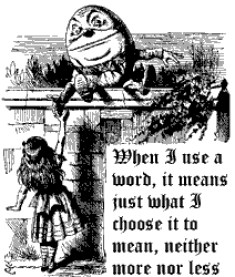 Looking for a weekend movie? If I had it to do over, out of these three, I’d pick First Man.
Looking for a weekend movie? If I had it to do over, out of these three, I’d pick First Man.
The Wife
Beautifully acted by Glenn Close and Jonathan Pryce, and directed by Björn Runge, the movie is based on the book by Meg Wolitzer, who wrote the screenplay with Jane Anderson (trailer). For me, there was an unreality to the story’s central conceit that (in this day and age) a woman uses her writing talent to prop up her Nobel prize-winning and serially unfaithful husband for forty years. I ended up mad at her.
What I liked best? The smarmy performance of Christian Slater, determined to get a tell-all biography out of it.
Rotten Tomatoes critics rating: 85%; audiences: 80%.
Colette is another movie in theaters now about a woman writer whose husband takes credit for her work and about a lot else too, judging by the previews. I’m not a Keira Knightley fan. But Dominic West as her husband . . . that’s tempting!
First Man
The biopic of Neil Armstrong was directed by Damien Chazelle (trailer), with a screenplay by Josh Singer and James R. Hansen, who wrote Armstrong’s biography. Ryan Gosling does a fine job as the buttoned-up Armstrong, who can keep it together even when he’s on the verge of bouncing off the atmosphere into the void of space in the hair-raising opening sequence. And it’s fun to see Claire Foy as an American housewife rather than The Queen.
I liked the evocation of the 1960s throughout and those times, which, in retrospect seem simpler, but of course weren’t. The early days of the space program were a time of heroes, even though Chazelle doesn’t overdo it. Ignore the complaints that he doesn’t show the flag-raising ceremony on the moon. Chazelle wisely opted for a scene that would be meaningful to the very private Armstrong, not a rah-rah “we’re number one” ego-stroke for the country.
Rotten Tomatoes critics rating: 88%; audiences: 64%.
The Old Man & the Gun
An aging Robert Redford portrays Forrest Tucker, a “gentleman bank robber,” who capped his career of prison escapes with an audacious escape from San Quentin at age 70. Written and directed by David Lowery (trailer), the screenplay also had help from David Grann, author of a 2003 New Yorker article about Tucker.
Sissy Spacek is a cautious but interested late-in-life romantic partner, and Casey Affleck plays a dogged police detective who follows Tucker’s career of robberies and won’t give up the case to overbearing FBI agents. I also liked his robbery team, Danny Glover and Tom Waits. It’s a pleasantly diverting entertainment, and you can safely wait for Blu-Ray.
Rotten Tomatoes critics rating: 90%; audiences: 62%.






 One helpful resource ought to be the Corpus of Founding Era American English, based on some 100 million words of text from 1760 to 1799 from various sources. (See how
One helpful resource ought to be the Corpus of Founding Era American English, based on some 100 million words of text from 1760 to 1799 from various sources. (See how 






 Reviewer
Reviewer 


 Right in the middle of Wimbledon’s 150th Championships we scored a Netflix copy of director Janus Metz’s 2017 movie about the classic 1980 matchup between Ice-Borg and the Superbrat, with a script by Ronnie Sandahl (
Right in the middle of Wimbledon’s 150th Championships we scored a Netflix copy of director Janus Metz’s 2017 movie about the classic 1980 matchup between Ice-Borg and the Superbrat, with a script by Ronnie Sandahl ( Overwhelmed by the tsunami of pettiness and downright meanness in the news this summer? These biopics make a refreshing change. RBG and Won’t You Be My Neighbor? properly celebrate two talented individuals who single-mindedly dedicated themselves to making better the lives of others.
Overwhelmed by the tsunami of pettiness and downright meanness in the news this summer? These biopics make a refreshing change. RBG and Won’t You Be My Neighbor? properly celebrate two talented individuals who single-mindedly dedicated themselves to making better the lives of others. When I saw previews of this Morgan Neville documentary about children’s television personality Fred Rogers, I was afraid it might be overly saccharine (
When I saw previews of this Morgan Neville documentary about children’s television personality Fred Rogers, I was afraid it might be overly saccharine ( Not counting an early morning trip to my cousin’s impressive community garden in Austin, Texas, where we picked tomatoes, tomatoes, and more tomatoes, as well as peppers, onions, and eggplant, most of our touristy activities in the capital of the Lone Star State involved plants.
Not counting an early morning trip to my cousin’s impressive community garden in Austin, Texas, where we picked tomatoes, tomatoes, and more tomatoes, as well as peppers, onions, and eggplant, most of our touristy activities in the capital of the Lone Star State involved plants.
